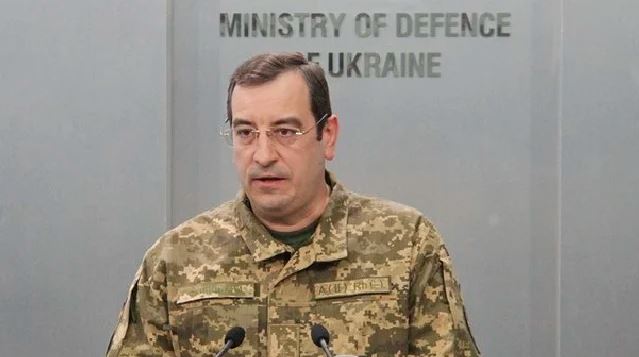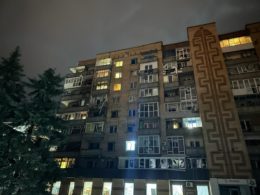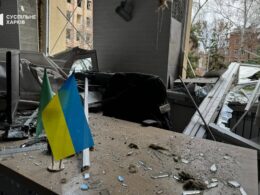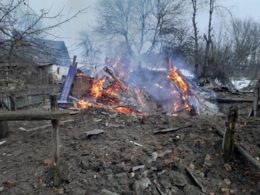In an interview with RBC-Ukraine, Deputy Chief of the Defence Intelligence of Ukraine Vadym Skibitskyi says that sanctions have limited Russia’s high-precision missile production to 20-30 a month but wants to double this number, that it plans to launch production of Shahed drones, and that it can wage war till 2023 or 2024 at most.
High-precision missiles at 15% of pre-war volumes
Skibitskyi highlighted that Russia’s missile production has been significantly impacted by international sanctions, which have left stocks of high-precision missiles, including Iskanders, Kalibr, Kh-101, Kh-555, Kinzhals, and Kh-22, at a mere 15% of their pre-war volumes.
According to Skibitskyi, the Russians could produce only 20-30 Kalibr and Kh-101 cruise missiles per month at the end of 2022. They want to double this number, but
“their main obstacle is sanctions. These missiles have a large share of foreign components. If the sanctions are upheld and strictly monitored, the enemy will not be able to implement these plans.”
As a result, Russia has had to reduce the use of precision-guided missiles in its strikes, and the interval between strikes has increased: in October 2022, the Russians carried out massive shelling once a week, then once every 10-14 days, and now they cannot organize shelling more than twice a month because they need to have certain stocks, Skibitskyi says.
Regarding the Iranian-made Shahed kamikaze drones that Russia uses to against Ukraine’s civilian infrastructure, Ukraine estimates that Russia has about 200 left:
“They receive them in batches of 250-300 units. To date, the Russians have used about 800 units. However, we know that they will try to establish their own production of these drones. We clearly understand where they plan to do this and how.”
Further missile strikes to target military targets
Skibitskyi expects Russia to shift its missile strike focus from Ukraine’s energy infrastructure, still intact despite a winter of Russian attempts to destroy it in missile volleys, to Ukraine’s military targets, troop concentrations, and logistics systems, although the energy sector and critical infrastructure facilities will still remain among the targets.
“We are analyzing which facilities are being reconnoitered by the Russian Federation. Among them are hydraulic structures, bridges across the Dnipro River, airfields and airports, and supply routes for weapons and military equipment coming from the West. Russia is constantly conducting reconnaissance of these objects, including space reconnaissance,” he stated.
Furthermore, Skibitskyi mentioned that Russia is no longer capable of launching 90-110 precision cruise missiles in one attack as it used to. Instead, they are now “accumulating and trying to launch a massive strike, combining various means of destruction,” in an effort to break through Ukraine’s air defenses.
As well, they now combine different types of missiles – from high-precision, old Kh-22s, hypersonic Kinzhals to S-300 anti-aircraft missiles and use UAVs and various balloons more actively to distract and reconnoiter Ukraine’s air defenses.
Russia’s “great offensive” failed
Russia currently lacks the capacity for large-scale offensive operations, Skibitskyi believes: the “grand offensive” that Russia launched in early February has failed to reach the borders of Donetsk and Luhansk oblasts.
“The grand offensive was more a result of Russian propaganda and an overestimation of its capabilities. So, where is that grand offensive? The Russians initiated an active offensive in early February, still aiming to reach the borders of the Donetsk and Luhansk regions. However, it has become clear that Russian troops lack the capacity to carry out large-scale strategic offensive operations. Our defenders are repelling attacks, holding the line, and restraining enemy forces in various sections of the frontlines. After all, the Russians anticipated rapid success in specific directions and planned to expand from there, but such success has not materialized.”
The lesson learned from a year of war is that Russia is incapable of launching a significant strategic offensive on 2-3 fronts simultaneously — this became evident from the onset of the invasion, Skibitskyi says.
Regarding how long the war may last, Skibitskyi referred to Lithuanian military intelligence, which states that “Russia has a two-year reserve.” He added,
“We also say that they can wage war until 2023 or 2024 at the latest. This is if we are talking about a conventional war. And if sanctions are tightened, this margin will be even smaller.”
Skibitskyi emphasized that Ukraine’s military intelligence knows the disposition of Russian troops, their reserves, and their plans, and that the Ukrainian Armed Forces’ General Staff plans all operations to deter the enemy and prepare for further actions.








